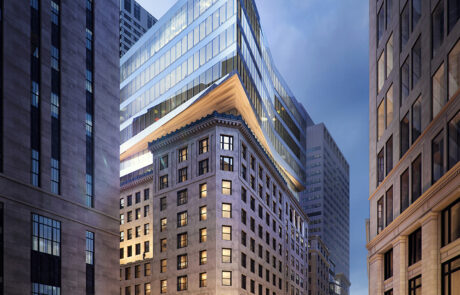The 33 Congress Street project in Boston is a redevelopment initiative that transformed a historic building in the city’s Financial District into a modern, mixed-use space. This project is part of a broader trend in Boston where historic properties are being repurposed to meet contemporary commercial and residential needs while preserving the architectural character of the area. The 33 Congress Street project exemplifies how historic buildings can be successfully adapted for modern use, blending preservation with innovation. Prime Steel Inc.’s involvement in the structural steelwork was crucial to maintaining the building’s integrity while allowing for its transformation into a modern, functional space.

